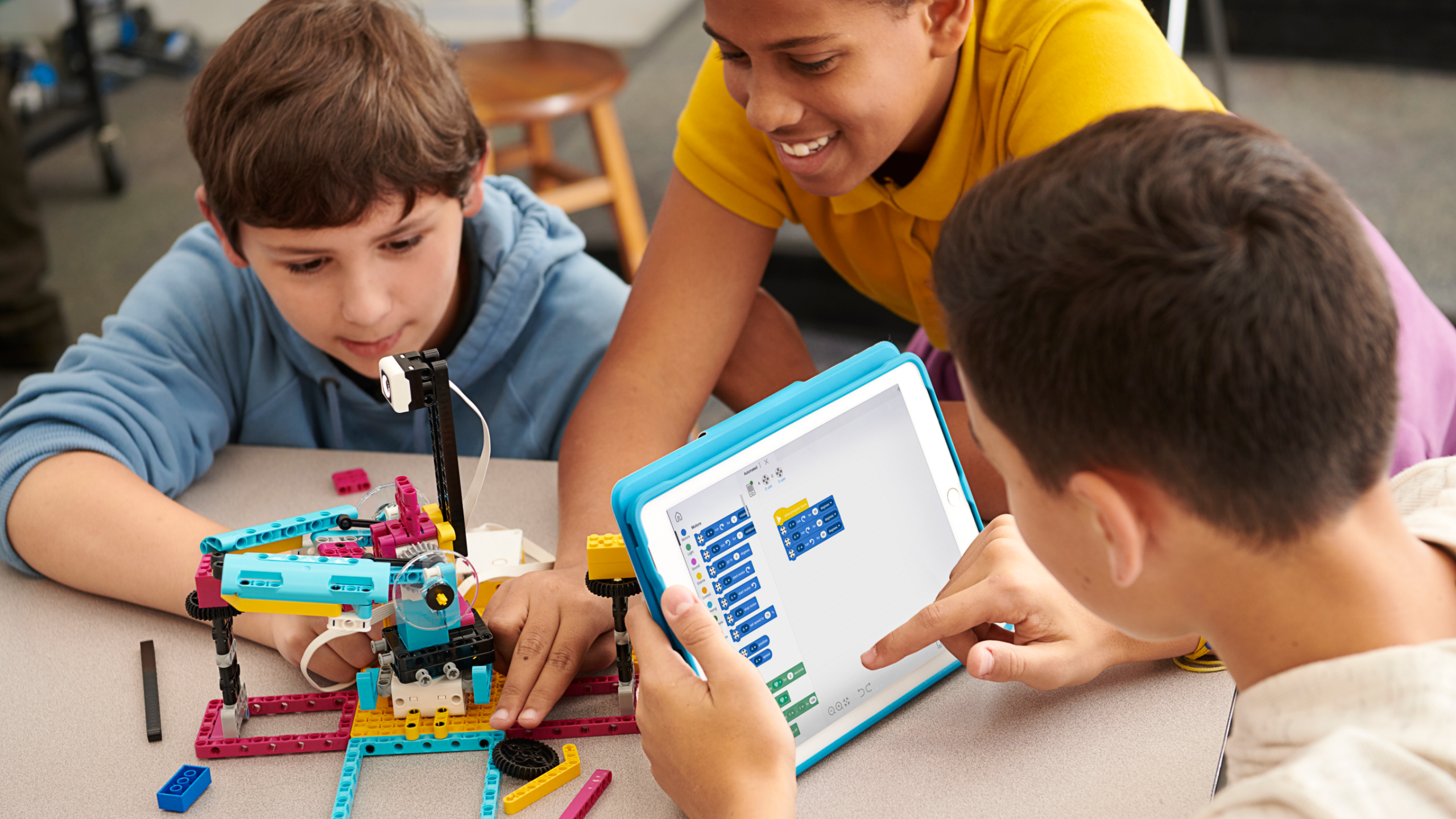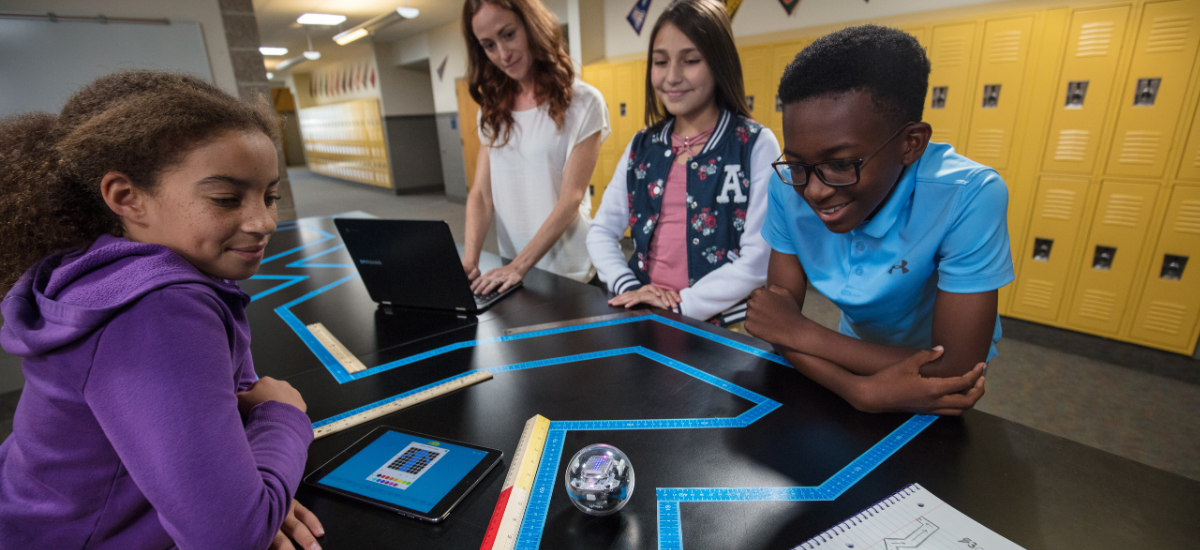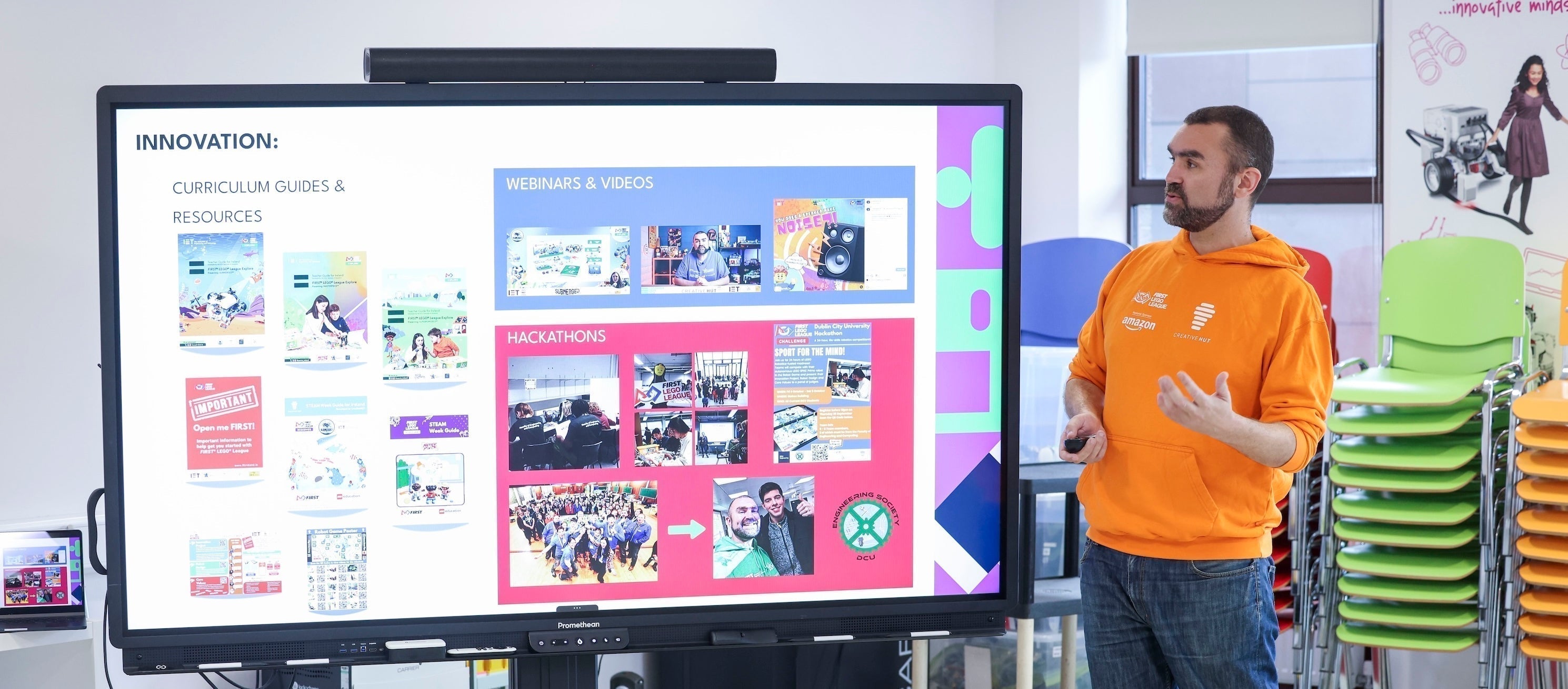The UK National Curriculum encourages students not just to use technology, but to understand and create with it. LEGO® Education SPIKE™ Essential and SPIKE™ Prime bring these goals to life through hands-on STEM projects that blend computing, science, maths, and design & technology.
Here’s how each SPIKE set directly supports UK learning outcomes from Key Stage 1 through Key Stage 4, with examples of classroom activities that make the curriculum come alive.
SPIKE Essential - Foundation for Computing and STEM (Key Stages 1–2)
SPIKE Essential is perfect for pupils aged 6–10. Its story-based lessons, simple hardware, and icon-based coding help young learners grasp big concepts through play.
Computing Curriculum Links
Curriculum Goal: Understand what algorithms are and how they are implemented as programs on digital devices.
Activity Example: Big Little Helper– Pupils build a small robot to help transport a pupil’s belongings to their house. They plan the route (algorithm), program the steps using icon blocks, and test if it works — developing early sequencing and debugging skills.
Curriculum Goal: Create and debug simple programmes.
Activity Example: Treehouse Camp – Students build a treehouse with a mechanical roof. They are then given a coding sequence which causes the roof to malfunction. The students need to debug the program, ensuring the roof operates correctly.
Curriculum Goal: Use logical reasoning to predict the behaviour of simple programs.
Activity Example: Colour Sorter Challenge – Using the Colour Sensor, pupils predict what will happen when the sensor detects red, green, or blue blocks. They then test and modify the program to sort items — developing reasoning and cause–effect understanding.
Science Curriculum Links
Curriculum Goal: Explore forces, motion, and energy.
Activity Example: The Spinning Ferris Wheel – Pupils build a spinning ferris wheel and experiment with motor speed, direction, and friction, observing how changes affect motion.
Design & Technology Curriculum Links
Curriculum Goal: Design purposeful, functional products for themselves and others.
Activity Example: Help the Story Characters (Note - This is not a LEGO® Education Spike Essential unit plan lesson, however it is a great activity that can be adapted to any topic you are working on in your lessons.) - Students design and build solutions for minifigure story challenges (e.g., a pet feeder or a delivery system), moving through ideation, building, testing, and reflection.
Curriculum Goal: Evaluate ideas and improve them.
Activity Example: A-Maze-Ing – Pupils build and program a maze game that counts the number of tilts needed to complete the game. The pupils will need to evaluate the current design and then improve them, making a truly unique maze game experience.

Maths Curriculum Links
Curriculum Goal: Measure, compare, and interpret data.
Activity Example: Animal Alarm - In this activity, pupils will design and program a high-tech campsite that uses a colour sensor to detect animals passing by. When the sensor identifies specific colours, it will trigger an alarm to alert the campers. Pupils will then enhance their program to record data, tracking how many times each type of animal (by colour) passes the sensor. At the end of the activity, they will analyse their data to draw conclusions — for example, determining the total number of animals detected, and comparing how many red animals passed compared to yellow ones.
Learning Outcomes from SPIKE Essential
By the end of Key Stage 2, pupils who use SPIKE Essential can:
-
Understand algorithms as step-by-step instructions.
-
Create and debug programs to control physical devices.
-
Apply scientific enquiry and design thinking to practical tasks.
-
Collaborate and problem-solve creatively.
SPIKE Prime - Engineering the Future (Key Stages 3–4)
SPIKE Prime builds on these foundations with greater complexity, preparing students for GCSE Computing, D&T, and Science. (The following activity ideas are not from the LEGO® Education Spike Prime unit plans, however they are great activities that can be adapted to suit your teaching needs.)
Computing Curriculum Links
Curriculum Goal: Design, use, and evaluate computational abstractions that model the state and behaviour of real-world problems.
Activity Example: Autonomous Vehicle Project – Students build a vehicle with Distance and Color Sensors to stop at red and go on green. They apply control structures (loops, conditionals), mirroring real-world automotive automation.
Curriculum Goal: Use two or more programming languages, at least one of which is text-based, to solve computational problems.
Activity Example: Python Line Follower – Students write Python code for a robot to follow a black line, using sensor feedback and real-time data — bridging block coding to text-based programming.
Curriculum Goal: Understand simple Boolean logic and use logic gates in context.
Activity Example: Security System Challenge – Create a prototype door alarm that triggers when an object passes a sensor; discuss “if this, then that” conditions in logic.
Design & Technology Curriculum Links
Curriculum Goal: Develop and communicate design ideas using annotated sketches and prototypes. (The following activity ideas are not from the LEGO® Education Spike Prime unit plans, however they are great activities that can be adapted to suit your teaching needs.)
Activity Example: Robot Arm Engineering – Students prototype a robotic arm that lifts an object. They test load capacity and movement precision.
Curriculum Goal: Select from and use specialist tools and equipment to make high-quality products.
Activity Example: Mechanical Sorting Machine – Learners design, build, and refine a machine that sorts objects by size or color, reflecting industry automation processes.
Science Curriculum Links
Curriculum Goal: Investigate motion, forces, and energy transfer. (The following activity idea is not from the LEGO® Education Spike Prime unit plans, however it is a great activity that can be adapted to suit your teaching needs.)
Activity Example: Measuring Acceleration – Using SPIKE Prime’s gyro sensor, students gather data to graph angular velocity or distance over time, reinforcing quantitative analysis.

Maths Curriculum Links
Curriculum Goal: Use data and formulae in practical contexts. (The following activity idea is not from the LEGO® Education Spike Prime unit plans, however it is a great activity that can be adapted to suit your teaching needs.)
Activity Example: Gear Ratio Investigation – Students calculate how gear size affects speed and torque, linking proportional reasoning and algebra to mechanical design.
Learning Outcomes from SPIKE Prime
Students develop:
-
Computational thinking and algorithmic design skills.
-
Python coding competence.
-
Understanding of mechanical systems and physical computing.
-
Real-world problem-solving and teamwork experience.
SPIKE Essential and SPIKE Prime provide a complete STEM pathway across the UK curriculum — from discovering how code works in Key Stage 1 to building autonomous robots in Key Stage 4.










Share:
Discovering Dyslexia: A Journey of Understanding, Hope and Hands-On STEM Support
Building Skills, Building Futures: How LEGO® Education SPIKE™ Connects CSR to Real-World Industry Impact